www.johntyman.com/peru/12.html
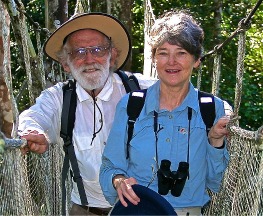 |
CULTURES IN CONTEXT PERU The Incas and Prehistoric Cultures IV: INCA CULTURE 4.3a: The Inca Empire and Governance |
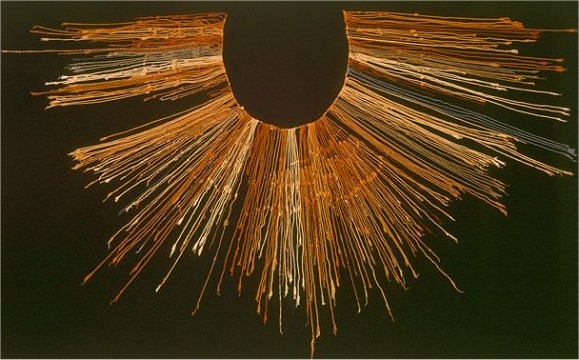
124 The Incas never developed a written language. Instead they used quipu (also spelled khipu), or “talking knots”, made from string, for collecting data and keeping records. They did not invent the quipu; but borrowed it from an earlier Andean culture. Through knot type, cord and placement they could encode incredible amounts of information, from the census to astronomy and even history and poetry. “In urban organization and city-building - as in agriculture, metallurgy, weaving, road-building, and even administration - the Incas excelled mainly because they took what already existed and incorporated it into a vast new vision of political and economic expansion.” (Adriana Von Hagen & Craig Morris, “The Cities of the Ancient Andes”, p.165: and photo of quipu in the Larco Museum, Lima) |
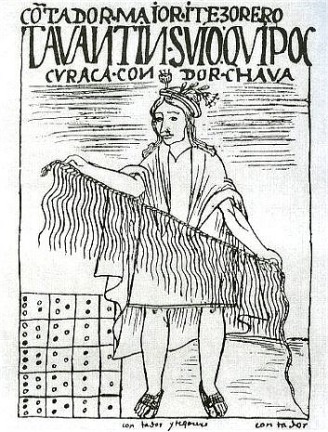
125. A quipu had a main cord with a series of strings attached to it, on which there were knots that represented decimal units. Numbers from one to nine were recorded at the end of the strings; while tens, hundreds, and sometimes thousands were proportionally closer to the main cord. Strings of different colours represented specific categories of objects: yellow for gold, red for the army, white for peace and so on. |
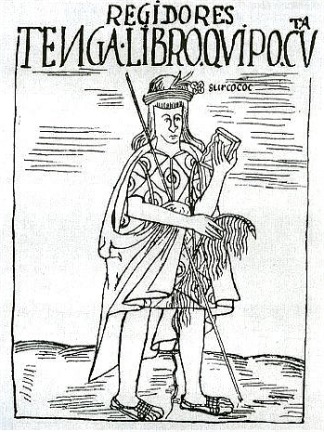
126. In his Royal Commentaries (page 209) La Vega describes a meeting of Inca leaders who wanted a better understanding of past history. “The quipucamayus who worked these strings, were not only accountants but also the historians of each nation. They never let their quipus out of their hands, and kept passing their cords and knots through their fingers so as not to forget the tradition behind all these accounts”. Managers, like this one, visited Indian homes every six months to “check that the people are not in need of anything and that they follow their heritage”. (Poma page 263) |
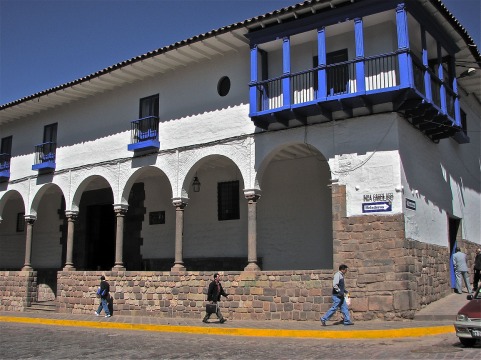
127. Much of what we know of Inca history and culture comes from the writing of the son of an Inca princess and a conquistador. Already quoted above, he was born in 1539, converted to Catholicism, and moved to Spain when he was 21, where he wrote a series of “Royal Commentaries”. His name was Garcilaso Inca de la Vega, and he is believed to have lived in this house in Cuzco before he left Peru. |
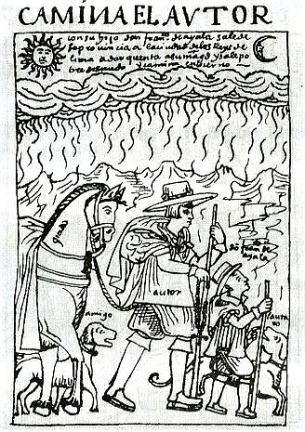
128. The other authentic early record of daily life in the Inca Empire, and its decline and fall, is contained in the chronicles of Guaman Poma quoted many times already. He was born in 1535, also the son of an Inca princess and another conquistador, and he travelled widely around Peru. Here he walks with his son to go to Lima to hand over his illustrated chronicle, which was 30 years in the making. |
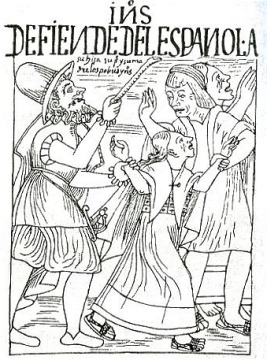
129. Poma’s chronicle exposed the lust of the conquistadors. Here the parents of a young girl resist the abduction of their daughter. Guaman Poma noted that “magistrates, scribes, priests and their brothers, administrators and butlers take the Indian women and children; … to use as they pleased.” (Page 282.) |
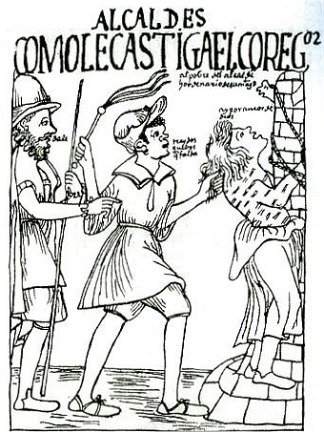
130 Poma also documented the tyranny of the Spanish administration. He was horrified by the actions of both priests and magistrates. His drawings show people whipped, beaten with sticks, and hung up by their feet; also naked women being whipped because they had not provided their tax of two eggs. |
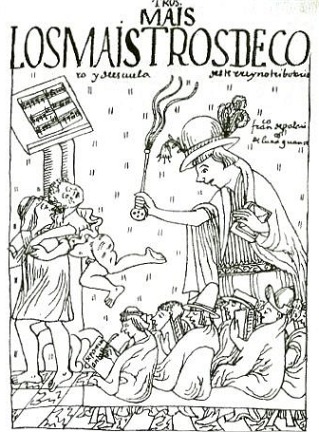
131. Poma illustrates the horrendous treatment of maids, the beating of children, forced marriages, and priests playing cards with the magistrates. Boys were to be taught in schools and girls at home. They were to be taught to read and write and to sing, “in order to be good Christians”. The same chronicle also records details of the daily life of “the Indians”, especially their systems of food production (documented in frames 109-111). |
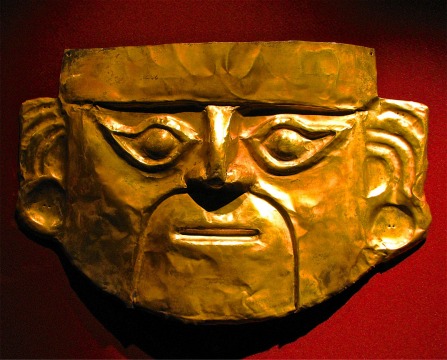
132. Gold and silver were not used as currency, as nothing could be bought or sold in the kingdom. Instead they were esteemed for their beauty, as being suitable for the decoration of temples and palaces and the Inca himself. Initially the Spanish enjoyed easy pickings, removing gold and silver from both palaces and temples. Later, however, the Spanish Crown created a regime under which the king commanded the conquistadors, who were now charged with evangelizing the Indians! (Gold mask in the Larco Museum) |
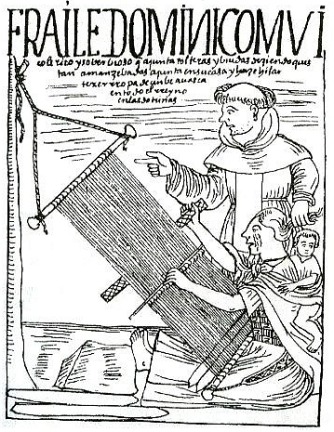
133. On their part “the Indians” had to pay tribute to the Spanish administration for the provision of food, water, and firewood. They had to assist with construction of churches, roads, bridges, canals and other public works sometimes a long way from home, and were supported on site for the duration of the project. Every community was also required to provide a set number of men to work in Spanish mines. Women and children were forced to work in textile workshops, chained to prevent them trying to escape. They produced loincloths, shirts, waste bands, bags, blankets, and slings. |
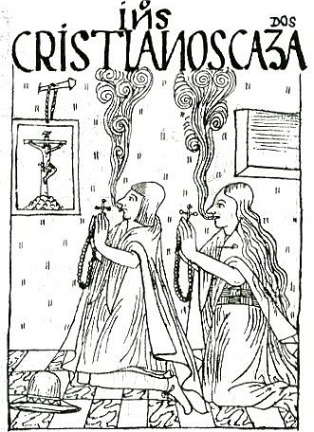
134. Guaman Poma noted that the priests were not fulfilling their Christian mission and magistrates and provincial governors were not upholding the laws of the Spanish Crown. He wanted changes made in the selection of priests. He praised the Franciscans and Jesuits for their Christian virtues and dedication to the poor: but the Dominicans, he said, were failing to do this; and “the behaviour of Christian Indians would improve if they were left in peace. (They) would be great saints… if it were not for the bad treatment they receive.” (A married couple, Poma page 269) |
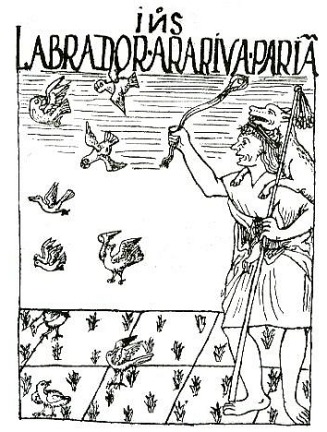
135. Poma observed that compelling the Indians to attend mass before daybreak had a negative effect on food production. He wrote: “To scare away the birds that destroy the crops you have to be there … so they can care for the crops (and) there is no shortage of food. Because if there is food, livestock and crop fields they serve God and his Majesty”. (Indian farmer tending his field, Poma page 279.) |
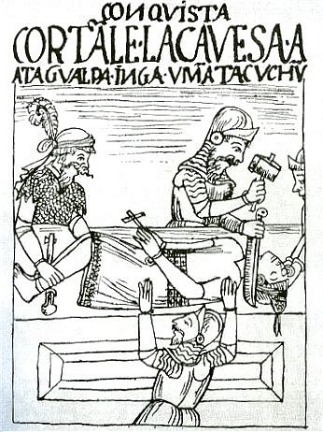
136. Guaman Poma’s chronicle was meant for the eyes of King Phillip II of Spain, in the hope that he would remedy the situation. Sadly, however, no members of the Inca royal family remained to reorder the lives of their people. And Inca traditions were progressively submerged beneath the ways of the Catholic Church, and the Spanish who now occupied their land. (Atahualpa is beheaded on instructions from Pizarro, even though he had paid the ransom required of him.) |
![]()
Text and photos by John Tyman
Intended for Educational Use Only.
Contact Dr. John Tyman at johntyman2@gmail.com
for information regarding public or commercial
use.
![]()
www.hillmanweb.com
Photo processing, Web page layout, formatting
and hosting by
William
Hillman ~ Brandon, Manitoba ~ Canada